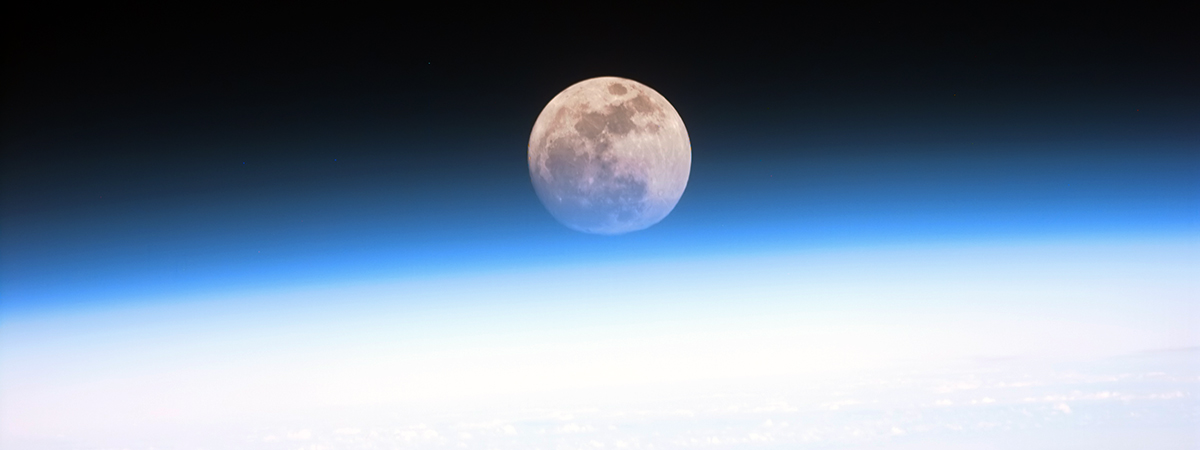In 2019 we celebrated the 50th anniversary of our arrival on the Moon. It was in July 1969 that commander Neil Armstrong, the first human to set foot on the Moon, said: “That’s one small step for a man, one giant leap for mankind.”
And here we are today, considering the possibility of living permanently outside our planet. One of the first options in this search for a new home is to live on our satellite, the Moon.
Many of the children alive today are part of a generation for which living permanently off Earth is a real possibility.
But is living on the Moon a real possibility?
Many scientists, especially those from space agencies such as NASA (United States), ESA (European Space Agency), JAXA (Japan), Roscosmos (Russia) and CNSA (China National Space Administration), are convinced that this will soon become a reality, although they acknowledge there are a good number of barriers that must be overcome first. There are many questions that must be asked, to date we have few answers.
What are the main obstacles that must be overcome in order to inhabit the Moon? How can we make it economically viable? Would it be a project suitable for tourism, or would the Moon only be for scientific use? Could there be tourism? How could we travel there with vehicles certified and approved for tourist transport?
As a starting point (and just like on our own planet) for life to sustain itself we would need to meet a series of basic requirements, such as energy, carbon, liquid water, and a suitable atmosphere that allows life to develop. We would also need protection against ambient temperatures and their abrupt change, as well as from the dangers arising from radiation. Falling meteorites are also a risk factor that must be addressed.
There are already investors and companies that are considering life away from Earth as a not too far distant reality. For example, there is a revolutionary moon housing project already underway. It is a project led by the prestigious British architecture firm Foster and Partners in collaboration with ESA, which, since 2012, have been carrying out the necessary research to create the first homes outside the Earth.
One of the areas of study is taking advantage of the advances made in 3D printing, which have already been used in the construction of homes here on Earth. The firm is exploring the possibility of using such means to build constructions which human beings can live in and which would be located on the southern side of the Moon, where there is constant sunlight. The main housing prototype would accommodate four people, who would have everything they need to live and would be protected from external threats caused by temperature changes, meteorites, or gamma rays, which are a consequence of the lack of atmosphere.
The Moon is about 384,000 kilometres from Earth and, as the transport of resources and materials is a lengthy and costly process, scientists are studying the possibility of using the Moon’s regolith as a source of the necessary raw materials. Regolith is the layer of unconsolidated, altered materials that appear as fragments of rock or mineral grains (not soil per se), resting on the Moon’s original unaltered solid bedrock. The idea would be to use the Moon’s regolith as a building material with 3D printers.
According to some scientists, the issue of water could be resolved, because in the craters located near the lunar poles there are areas that are never touched by sunlight, and where there is frozen water at temperatures of around -220 degrees centigrade.
As regards food, experiments already carried out on Earth demonstrate the viability of having closed systems that would make it possible to cultivate some types of vegetable garden plants in greenhouses.
Last but not least, we still must consider aerospace transport, as without this we would never be able to truly inhabit the Moon.
Is it conceivable to have a direct transport network with outer space, which people could access like tourist transport?
In addition to the plans drawn up by the European Space Agency (ESA) and the United States’ space agency (NASA), there are other aerospace agencies such as JAXA (Japanese Aerospace Exploration Agency), CNSA (China National Space Administration) and Roscosmos (Russian Federal Space Agency), all of which have very interesting projects to reach the Moon with satellites and robots, as well as to supply the ISS (International Space Station) on a regular basis in the future.
The real solution could also be in the hands of private companies, such as SpaceX, which currently has one of the most technologically advanced rockets in the world, known as Falcon 9. The concept of scalability has been one of the hallmarks of this company throughout its space career, as demonstrated by the megarocket Falcon Heavy. Recently they have revealed that the best is yet to come, in the form of the BFR (Big Falcon Rocket): a 106-metre high rocket with 100% reusable technology, capable of carrying 150 tonnes of cargo.
They are also planning an aerospace spacecraft called the “Moon Base Alpha” project, which is a key step forwards in the ambitious lunar base project, because in addition to being able to bring supplies to the ISS, it is also designed to transport materials and people to the Moon, and even to Mars.
When NASA was commissioned to consider this new leap in the space race, specifically in terms of travelling back to the Moon with manned missions, it called on aerospace companies to create projects and ensure that by 2024 it will be in a position to achieve that goal.
Meanwhile, with the project “Moon Village”, the European Space Agency wants to establish a stable population on the Moon, with a tentative date for this leap forwards towards conquering space set for 2030. It also goes even further by considering that Moon Village would allow not only work to be carried out on the Moon, but also the birth of the first human being outside our planet, which is expected to occur by 2040, according to Bernard Foing, director of ESA’s interstellar lunar group.
In this era of entrepreneurship, it is possible that in the coming years we may be surprised by small but highly ambitious projects related to the development of different specific aircraft, such as aircraft for tourist transport to the Moon. The trip would take no more than 3 days, allowing people to reach their chosen destination in order to live permanently or simply enjoy a vacation.
Would you like to become a true “lunatic”?



